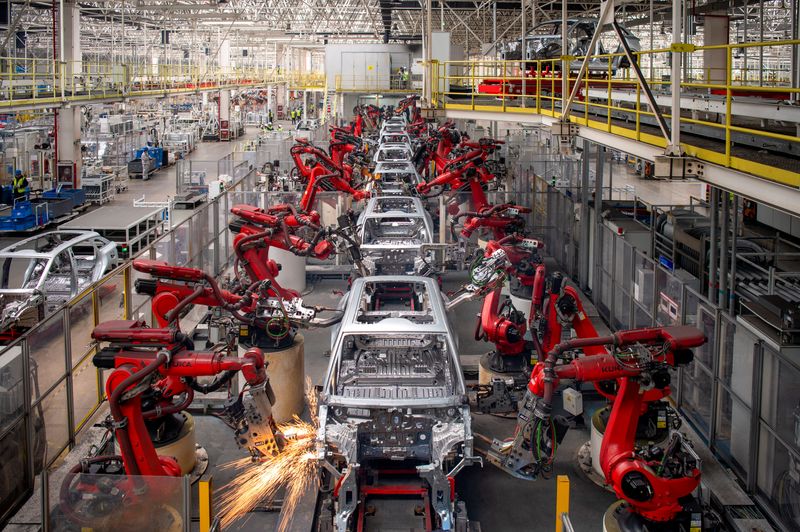China Overtakes Germany in Industrial Robot Usage: What It Means for the Global Economy
BERLIN (Reuters) – In a significant shift in the global industrial landscape, China has now surpassed Germany in its utilization of robots in manufacturing. An annual report released by the International Federation of Robotics (IFR) highlights this trend, revealing the increasing challenges the traditional European powerhouse faces from its Asian counterpart.
The Rise of Automation
Robot density, a crucial metric that gauges the level of automation in the manufacturing sector, puts South Korea at the forefront with an impressive 1,012 robots for every 10,000 employees, reflecting a 5% increase since 2018. Following closely are Singapore and now China, which boasts a density of 470 robots per 10,000 workers—a substantial leap from less than half that figure in 2019. In contrast, Germany has lagged slightly behind with a density of 429 robots per 10,000 employees, marking a steady growth rate of 5% over recent years.
According to IFR President Takayuki Ito, "China has invested heavily in automation technology and ranks third in robot density in 2023 after South Korea and Singapore, ahead of Germany and Japan." This growth indicates a major shift in the balance of industrial strength, as countries race to enhance their manufacturing capabilities through advanced technology.
Germany’s Economic Woes
Germany, long reliant on its robust industrial sector and exports, now finds itself grappling with stiff competition from China and other nations. As the country projects another economic contraction in 2024, it risks becoming the poorest performer among the Group of Seven wealthy democracies. This situation raises eyebrows not only among economists but also among the general public, who look to the manufacturing sector as a linchpin for stability.
With local factories historically being the backbone of Germany’s economy, many are concerned about how this robot revolution will shift jobs and production processes. For instance, imagine workers in the automotive industry in Stuttgart, where assembly lines are increasingly mechanized. These individuals may find themselves re-skilled to collaborate with machines rather than assemble products manually—a reflection of a growing trend worldwide.
What This Means for the Future
So, what does this mean for workers and consumers alike? As robot efficiency climbs, we could see lower production costs and, ideally, consumer prices. However, this might come at the cost of traditional jobs. The transition could lead to both opportunities and challenges, sparking debates about the future of work in industries that have relied on a human workforce for generations.
There’s an undeniable excitement surrounding these technological advancements, but it’s also accompanied by uncertainty. Will countries like Germany adapt swiftly enough to maintain their competitive edge, or will they be overshadowed by nations that have embraced this shift? Only time will tell.
A Call to Stay Informed
As the global landscape continues to evolve, staying updated on these changes is essential. Whether you’re a tech enthusiast, a business leader, or simply curious about the future of work, understanding these trends can provide invaluable insights.
The AI Buzz Hub team is excited to see where these breakthroughs take us. Want to stay in the loop on all things AI? Subscribe to our newsletter or share this article with your fellow enthusiasts.




